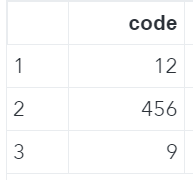

Is there a problem with that approach? The only problem I can figure is that you might accidentally re-write over your data that you later need, but I only write it that way when I'm sure of the manipulation i'm putting in my data step. So the next time(s) I run the script the workspace feels less cluttered. Here is the conversion to character: chardate put(date,yymmdd10. If you care going to do additional computations or work with the date, you need to leave it as numeric. You can convert the date to a plain old character string, which is only useful in labels and titles and reports. Then once I know everything is working, I re-write the script as data a set a. There is no such thing as a character date in SAS. So sometimes I'll test out my script with data b set a. Moreover, I'm interested in keeping the same variable names. I'm interested in identifying all numeric variable types and converting them to character type. I've been rewriting datasets back on themselves (only when I'm sure of the step) to not clutter up my workspace. I find a lot of great resources for converting character variables to numeric, but I don't find much in terms of doing the reverse. data df set df ).Ĭan you explain why? I've only been using SAS for 3 months (no one else on my team is available to mentor) so I've been figuring it out as I go. You can find a specific character, such as a letter, a group of letters, or special characters, by using the index function. I guess creating a new variable, dropping the old one, and renaming new one back to the old name is actually a little shorter.Īlso, don't write datasets back to themselves (e.g. Only 4 are available.Ģ 93.20 # Display 5 columns with zero appended after decimal.ģ 0.11 # Display 5 columns with 2 places after decimal.Ĥ 15.12 # Display 5 columns with 2 places after decimal.ġ $8,722.00 # Display 10 columns with leading $ sign, comma at thousandth place and zeros appended after decimal.Ģ $93.20 # Only 2 integers available before decimal and one available after the decimal.ģ $0.11 # No integers available before decimal and two available after the decimal.Ĥ $15.12 # Only 2 integers available before decimal and two available after the decimal.OK, thanks for that info. When we execute above code, it produces following result −ġ 8722.0 # Display 6 columns with zero appended after decimal.Ģ 93.200 # Display 6 columns with zero appended after decimal.ģ 0.112 # No integers before decimal, so display 3 available digits after decimal.Ĥ 15.116 # Display 6 columns with 3 available digits after decimal.ġ 8722 # Display 5 columns. If the number of digits after the decimal point is greater than the format specifier then the last digit will be rounded off.īelow examples illustrate above scenarios. If the number of digits after the decimal point is less than the format specifier then zeros will be appended at the end.

Write maximum "n" number of columns with p decimal places, leading dollar sign and a comma at the thousandth place. Write maximum "n.p" number of columns with "p" decimal points. Write maximum "n" number of digits with no decimal point. Similar to applying format while reading the data, below is a list of formats used for displaying the data in the output of a SAS program. Maximum "n" number of columns with "p" decimal places which removes any comma or dollar signs. Maximum "n" number of columns with "p" decimal points. if you want for apply it to your numeric values. You need to use a numeric format, such as 11. Maximum "n" number of columns with no decimal point. Character formats (the ones starting the ) are applied to character values. W is the maximum number of data columns (including digits after decimal & the decimal point itself) allowed to be stored for the variable.ĭ is the number of digits to the right of the decimal.īelow is a list of formats used for reading the data into SAS. Syntaxįollowing is the description of the parameters used −įormatname is the name of the name of the numeric format applied to the variable. One for reading specific formats of the numeric data which is called informat and another for displaying the numeric data in specific format called as output format. It uses these formats at the end of the variable names to apply a specific numeric format to the data. SAS can handle a wide variety of numeric data formats.


 0 kommentar(er)
0 kommentar(er)
